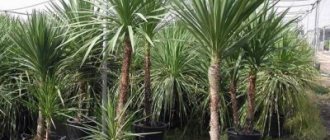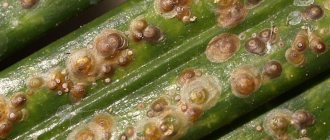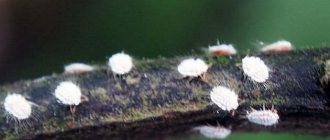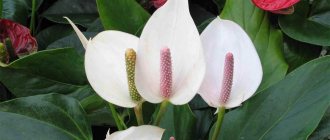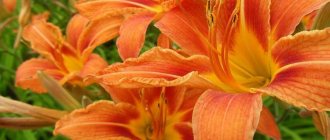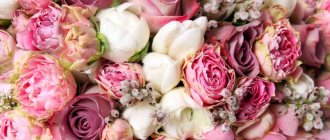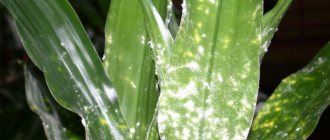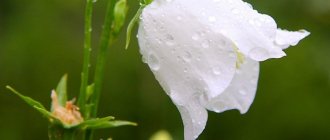Plants similar to hemp
In nature, there are many representatives of the flora that are similar in appearance to cannabis. Hops (Hamulus) also belongs to the same family as marijuana. The largest areas for cultivation of these plants are in the temperate latitudes of the northern hemisphere and tropical and subtropical climates near the equator. Both types of plants have an alternate or opposite leaf structure, and fertilization of female plants with pollen from males is carried out by wind or insects.
Medical preparations similar to the composition of marijuana
In Europe they use honey. drugs similar to the composition of marijuana, they are legalized, dosages and use are strictly controlled, the drugs themselves are available only by prescription.
"Sativex"
Spray for oral use, prescribed for asthmatics. The active substance, nabiximols, is included in the list of narcotic drugs, therefore it is dispensed strictly on the recommendation of a doctor. Sativex contains a dosed amount of tetrahydrocannabinol and cannabidiol. With one spritz, 2.7 mg of THC and 2.5 mg of CBD enter the human body.
"Dronabinol"
A synthetically produced cannabinoid containing tetrahydrocannabinol, presented in capsule form. There are drops with cannabis under the same name. It is a similar synthetic analogue of the plant THC. Used during chemotherapy to suppress side effects (nausea, vomiting, lack of appetite), for AIDS, if the patient has lost muscle mass. Negative reactions from the use of Dronabinol include: mood changes, hallucinations, fainting.
Historical retreat
Like many types of vegetation similar in species or class to hemp, hemp has been cultivated for thousands of years. Historians believe that the very first varieties of hemp grew in Iran. Afterwards they spread to Eurasia and America, to cool climates, where they acquired new properties valuable to growers. However, the utilitarian benefits of cannabis were known back in the 3000s BC. Very durable fabric was made from strong, wear-resistant plant fibers. Later, during the centuries of colonization, all ships for long voyages were equipped with hemp ropes.
Of course, from a historical point of view, cannabis can be compared, for example, with cotton or nettles (textile sewing). However, growers are interested in completely different plants.
Grover's interest
Lupine or wolf bean. It can be either annual or perennial. The flowering bushes are very reminiscent of cannabis sativa varieties with a powerful central cola and thin carved leaves. In addition, these plants enrich the soil with nitrogen, which is very important for cannabis. Besides that, they are simply pleasant to look at. Any outdoor grower will easily cover their garden bed with these gorgeous, colorful flowers. They tolerate drought well and can reach 1.5 m in height.
Castor bean. This is the choice of those who prefer to grow Indica. The bushes and leaves are shaped very much like Indica strains. Castor beans are found in the south of Russia. It is used as an ornamental plant. Another important plus is the repelling of flies and other harmful insects, so there is nothing to be afraid of hemp. Interesting fact: castor beans are poisonous and toxic. It is from it (the fruits) that the poisonous substance, ricin, is obtained. This is an option for the front garden, as it is difficult to find in the wild due to its poisonous properties. The grower himself should also be more careful.
Hemp nettle. It has a similar structure of bushes characteristic of Indica - lush and low. The leaves are more Sativa-like. If the plant is solitary, then in adult form it resembles male hemp with dust bags.
Meadowsweet (meadowsweet). The plant got its name because the leaves are shaped like a palm (hand) with fingers spread apart. By the way, this does not prevent them from looking like the leaves of indica cannabis varieties. The bushes also have flowering internodes and large inflorescences on the tops of the plants, which are one-to-one colas.
Nirgundi (Chinese twig). The structure of the bushes resembles lupine or cannabis. Leaves with 5th and 7th lobes, resinous inflorescences in the internodes are also present. The fragrant shrub grows large enough to camouflage a hemp bed. Its homeland is India, China and the Philippines, so it will take root well in temperate and subtropical climates.
Motherwort five-lobed. A perennial plant with opposite lobate leaves and flowering internodes. When flowering, it looks like a bush with a main central cola. It is suitable for camouflaging purple cannabis varieties, since the inflorescences have a beautiful purple or violet color.
Stinging nettle. This plant is considered not only excellent camouflage and protection (because it burns). For its comfortable existence, the same conditions are needed: humidity, looseness and acidity of the soil, temperature, etc. It grows everywhere in temperate latitudes, without causing bewilderment or curiosity. It can grow more than 1 m in height, and during flowering it resembles a cannabis bush with a large central cola.
*All information provided is for informational purposes only and does not constitute guidance or a call to action.
**We remind you that the use of marijuana seeds as seed material (growing hemp for the purpose of obtaining a plant) is prohibited by the Criminal Code of the Russian Federation. You can find out more about the law here.
Guineesine
The main mechanism of action is an endocannabinoid reuptake inhibitor. In general, from birth to death, cannabinoids are already circulating in our body, even if you have never taken anything. Supplementing with guinenzine (or guinizine) slows down the breakdown of cannabinoids that are already in each of us. You should not expect a narcotic effect, but the perception may change somewhat. And no test will find THC in you (4). Damn, such information should be sold!)) On the Russian-language Internet there is only one mention of guinenzina in the entire Google)
The substance has many advantages, possibly working as an MAO inhibitor, which opens up the potential for use in medicine for depressive disorders (5).
It is currently sold as a chemical substance on foreign websites. Also found in black pepper (6). So far I have not found information on how much it is needed and how long it works. But black pepper is definitely legal in our country. So this information is for the future.
Family Hemp
Hemp is an annual dioecious herbaceous plant from the Cannabis family of the order Rosaceae. As classifications have changed, hemp has been classified at various times in the mulberry, mulberry, and nettle families.
Under natural conditions, hemp can grow almost throughout the entire globe, except for the cold northern latitudes. The optimal climate zones are tropical, subtropical and temperate.
Characteristic features of the appearance of cannabis are leaves, dissected by blades with an odd number of them. The size of the leaves and the number of blades on them decreases from the middle of the trunk to its top.
Hemp's closest relative
The closest relative of hemp is hops, another of the most famous representatives of the Cannabis family. Despite the close relationship, it is quite difficult to confuse hops and hemp - the stem of hemp is erect, while that of hops is curly. The shape of the inflorescences, the structure of the leaves and fruits also differ.
Hops and hemp are similar in that they only require female plants to produce a harvest. The need for male plants arises only for procreation - when it is necessary to develop new varieties or obtain seeds for planting.
Should you cover sprouts with glasses?
Growers often cover the sprouts with plastic cups, placing them upside down. To use the method or not? There are many opinions on this matter. But observations of the growth of plants under and without glasses allowed us to conclude: sprouts placed in different conditions still develop the same way. True, the lighting was carried out with 400W HPS lamps, which greatly heat the soil.
Therefore, glasses should be used depending on specific conditions. If the lamps are different, then glasses will not hurt, especially at night.
And it's not just that it's cold at night. Mice can smell the pleasant smell and eat the sprouts.
Glasses help provide the moisture the sprouts need. You also need to spray the plants with water from a spray bottle. It is enough to do one spray per day after turning off the lights at night. When the light is on, water droplets on the leaves act like lenses, and burns appear in their place.
Their appearance resembles cannabis
There are plants that can perfectly play the role of convenient extras for cannabis. They are similar to hemp not only in appearance, but also in terms of growing conditions. This makes it much easier for growers to care for both bushes. You can plant a large plot of land with twin plants to effectively camouflage several hemp trees among harmless bushes.
Hemp-like sapling
A perennial herbaceous plant from the Asteraceae family with a straight stem and three- to five-finger leaves. It reaches a height of 20-50 cm and at the vegetative growth stage is very similar to cannabis. The basket-shaped flowers are located at the tops of the stems and have a soft pink hue. The sapling blooms in June-July, and fruit-seeds appear in August. A window sill in a garden or dacha plot will not raise any questions for anyone, because it is often planted as an ornamental plant.
Motherwort five-lobed
A perennial herbaceous plant, reaching a height of 50-200 cm, depending on growth conditions. It has one or more erect branched stems with petiolate bright green leaves. The upper leaves have three lobes, the lower leaves five. The structure of the plant and the shape of the leaves are similar to cannabis. During flowering, Motherwort pentaloba produces a central light lilac inflorescence, reminiscent of the central cola of cannabis.
Hemp nettle
A herbaceous plant with an erect stem that can reach a height of 150 cm, and under favorable conditions grow above two meters. The bushes of this nettle are very similar in structure to hemp; large leaves have 3-5 deeply divided finger parts. Particularly similar to cannabis are male hemp nettle plants, which have clusters of dust sacs. Hemp nettle blooms from June to August, and in August produces fruits in the form of small nuts 2-2.5 mm.
Stinging nettle
A perennial herbaceous plant with a straight stem, reaching a height of 60 cm to 2 meters (under ideal climatic conditions). This nettle is widespread in the temperate zone, so you can find it in any area, and this will not cause any surprise. Connoisseurs of guerrilla growing can safely plant cannabis on the outskirts of the forest among thickets of stinging nettle. The leaves of this plant are dark green in color, and the flowering bushes from a distance look very similar to cannabis with one central cola.
Chinese twig (Nigrundi)
The appearance of this plant during the vegetative growth stage is almost impossible to distinguish from cannabis. Chinese twig has the same straight stem and dark green palmately compound leaves, consisting of 3-5 pointed parts. In its natural environment, Nigrundi grows in China, India and the Philippines. In favorable conditions it can reach 3 meters in height. During the flowering period it is covered with beautiful lilac, blue or white flowers.
From Sanskrit, “nigrundi” is translated as “protecting the body from disease,” and this name was not given by chance, since the plant has great medicinal potential.
Meadowsweet (meadowsweet)
A herbaceous plant with a straight stem and large 5-7-lobed leaves that closely resemble cannabis leaves. The plant has healing properties, loves a humid climate and blooms in the first half of summer. A large inflorescence of meadowsweet at the first stage of its formation looks like a hemp bud.
*All information provided is for informational purposes only and does not constitute guidance or a call to action.
**We remind you that the use of marijuana seeds as seed material (growing hemp for the purpose of obtaining a plant) is prohibited by the Criminal Code of the Russian Federation. You can find out more about the law here.
How to distinguish real hemp from weed by smell and appearance
Plants similar to marijuana do not have its specific smell. Hemp without aroma is nonsense; there is not a single cultivated variety that does not emit a specific spirit to one degree or another. The only difference is the intensity. The maximum is reached at the end of flowering, and the plant begins to produce it almost from the first minutes of germination.
There are aromas that can help you “recognize” cannabis:
- Fruit or berry.
- Chocolate and spices.
- Coffee and the smell of chewing gum.
- Spirit of the earth (damp soil).
During the flowering period of cannabis, you can literally smell it and it is very strong to attract pollinating insects. The buds secrete resin, form trichomes, and over large areas the smell disappears naturally, but in a closed room, powerful filters and air purifiers will be required to remove the aroma of real cannabis.
Cannabis with a relatively weak odor include: Northern Lights, Northern Lights 5 x Haze, Kali-Mist, Masterkush.
The female plant is called the mother plant, the male plant is called the terra firma. Varieties with bisexual flowers and monoecious hemp have been artificially bred. Externally, the annual dioecious herbaceous plant hemp has an erect stem, rounded and hexagonal at the base, then, closer to the middle, it turns into 4 sides, and there is a cavity at the top.
The leaf is located opposite along the stem, but upwards it turns into another. The leaves themselves are petiolate, palmately dissected, palmately lobed, and consist of 5-7 segments with serrated edges. At the top the leaf is simple, three-lobed, but towards the bottom the number of segments increases.
The female flowers are a complex spike, the male flowers are a loose panicle. The fruits are bivalve, egg-shaped nuts, somewhat elongated, enclosed in bracts of gray-green, brown color.
Table No. 1 Signs and differences between cultivated and wild hemp
| Cultural | wild |
| The branches begin to grow at a height of 30 cm from the ground, the bush itself is compact. | Branching almost from the ground, loose. |
| The fruits are large 4*3 mm, grayish-green with a mesh shell. | The fruits are 3*2 mm long and wide, dark gray, small. |
| The sheet is positioned opposite with the transition to the next | Shaped like a Christmas tree |
| Capricious, requires specific lighting and a certain temperature. | Unpretentious, grows well in any conditions, adapts to temperature fluctuations. |
| – | The level of THC (tetrahydrocannabinol - a psychotropic substance) is low (0.02%). |
What other plants besides hemp produce cannabinoids?
Acmella oleracea
It is known as a remedy for toothache. The natives of the Amazon make a strong pain-relieving ointment from this plant. Experiments conducted by the University of Cambridge showed that the plant is good at blocking pain receptors on nerve endings.
Its cannabinoid-like substances are called N-isobutylamides; they act on CB2 receptors. Thanks to these properties, the plant is used as an analgesic for severe inflammatory processes. It is currently being considered as a new dental treatment for pain caused by the development of wisdom teeth.
Liverwort (Radula marginata)
It turns out that there are other versions of THC in the world. New Zealand liverwort contains significant amounts of perrottetinenic acid, which was first discovered in 2002 and is remarkably similar to THC. It is assumed that it can act in the same way on CB1 receptors. This receptor, when combined with THC, produces a psychoactive effect.
So far, there have not been any documented cases of this plant being used for its psychoactive effect. But liverwort has historically been used in the treatment of bronchitis, gallbladder, liver and bladder. This indicates its medicinal value.
Chocolate tree (Theobroma cacao)
Cannabis smokers know that drinking dark chocolate before taking a puff can increase their high. This is because chocolate contains many compounds that interact with the endocannabinoid system. Similar to the non-psychoactive CBD found in hemp, chocolate contains the FAAH enzyme.
FAAH is responsible for anandamide, which is found in the human body and is a natural version of THC. Chocolate increases the amount of anandamide, and this process makes a person feel generally good and calm.
In addition, in 1996, scientists at the Neuroscience Institute in San Diego, along with anandamide, discovered two more separate compounds in chocolate that act like cannabinoids. Although chocolate is not as potent as THC, it certainly has more effects on the brain and body than you might expect.
Black pepper (Piper nigrum)
Some cannabis strains, such as Hash Plant, have a peppery taste and aroma. The fact is that pepper contains special terpenes called beta-caryophyllenes (BCF). Terpenes are found in large quantities in plant essential oils and give them their aroma. Not surprisingly, the same flavor was found in black pepper.
More recently, it has been discovered that BCPs actually act in the same way as cannabinoids. BCPs have a similar ability to act on CB2 receptors. Research has shown that the terpene's anti-inflammatory compounds make it a valuable drug in the treatment of diseases such as arthritis and osteoporosis. It has also been shown that BCPs can improve the effectiveness of anticancer drugs.
These are just a few plants known to interact with the endocannabinoid system. There are also Peruvian maca and Chinese rhododendron. As research continues, there will definitely be more such plants.
The hemp plant paved the way for the discovery of the endocannabinoid system in our body. Today, botanists and natural scientists know that plant cannabinoids are much more widespread than we realized. All of the plants listed above have valuable therapeutic properties. Many of them have been used as traditional medicines for centuries. We are just beginning to understand why they are so useful.
Plants with marijuana-like composition and effects
It was previously believed that THC found in hemp and some other phytocannabinoids act on cannabinoid receptors. But there are simple plants and products that also modulate cannabimimetics, which have a positive effect on the endocannabinoid system of the human body as a whole.
Echinacea
A powerful plant-based immune stimulant, decoctions from it are drunk to reduce cold symptoms, relieve pain or improve mental health. Echinacea contains N-acylethanolamines, fatty acid compounds that activate and bind cannabinoid receptors. By interacting with CB2 receptors, they stimulate immune function and reduce the inflammatory process.
Truffles
Black truffle contains the main metabolite enzymes of the endocannabinoid system and anandamide. This is a substance that acts on the central nervous system, improves mood, and affects human emotions. They are produced during the ripening process of the truffle.
Anandamide, or the “bliss molecule,” releases chemicals into the human brain that are similar in effect to the THC found in cannabis. It has a positive effect on satiety, brain function and sperm composition in men.
Cocoa
Bitter bean, powder for preparing the drink of the same name. It contains anandamide, an endocannabinoid produced in the human brain, positioned by scientists as a “bliss neurotransmitter.” Cocoa contains substances that deactivate FAAH fatty acid amide hydrolase (an enzyme) that is part of the endocannabinoid system and breaks down anandamide.
This chemical process allows you to retain a substance inside the body for a long time that provides bliss, euphoria, and relaxation.
Immortelle
A healing plant, used by healers thousands of years ago, it contains antioxidants, antibacterial and anti-inflammatory substances. A flower that is only partially similar to hemp, as its essential oil is used to stabilize a person’s mood. Helichrysum is an immune stimulant and contains compounds structurally similar to cannabigerol (CBG) and cannabigerolic acid (CBGa). Researchers believe that these non-cannabis compounds have positive effects on the central nervous system in the body, but more research is needed to be sure.
Omega-3 fatty acids
Found in large quantities in some types of fish, it is believed that the body has special compounds that convert Omega-3 into endocannabinoids. This proves the similarity of fatty acids with hemp, because. they can have the same therapeutic effect, incl. relief of inflammation and immune support.
What types of hemp are there, or the magical properties of the plant that are not associated with smoking.
Hello dear friend. Once upon a time, I already happened to write three whole articles about this wonderful plant, but what happened was long forgotten. I think hemp definitely deserves a lot more attention than other plants. Therefore, there will be a fourth part. Sit back, today we will continue to dispel stupid myths
First, let’s tell the reader why the article is called that way. The fact is that in the minds of most modern citizens the word hemp is associated only with smoking hemp. This sad consequence of prohibitions and anti-propaganda has led to the fact that the hemp industry has completely collapsed, as they say, and people are even afraid to say this word out loud.
People who grew up on these fairy tales don’t even think that besides the above-mentioned smokable hemp, there is another kind, and it’s difficult for them to imagine hemp itself as a plant. And all because no one told them what kind of plant it was, and why hundreds of thousands of hectares were planted with it. And I'll tell you.
Hemp is a dioecious herbaceous plant from the Cannabis family. Previously, it was classified either in the nettle family or in the mulberry family, but this does not interest us at all. The bushes look unique: on a straight stem, hemp grows palmate leaves with denticles, and its flowers are complex spikelets, covered with resin and collected in lush inflorescences. It is hardly possible to imagine this to someone who has not seen hemp in person. If these bushes grew among thousands of other plants, they would not bother anyone, but for some reason a person needed to grow it.
And here are the dried inflorescences. They can be used only for legal purposes, and only if the doctor allows it.
Someone will say: “Well, it’s clear why. To smoke! But no. Those parts of hemp that people are interested in are its long stem, from which hemp is obtained, and the seeds. In a couple of months, a hemp bush grows 3-4 meters in height, and does not require chemical protection from pests and does not deplete the soil.
To obtain hemp fiber, hemp is grown, which is also called industrial hemp. These are varieties of the cannabis sativa species specially selected by breeders, which grow quickly and produce good fiber. The same breeders also select the most non-narcotic specimens: the content of psychoactive substances in such hemp is 0.2-1%.
In addition to technical cannabis, there is psychoactive cannabis. You cannot get high-quality fiber from it, but there are much more psychoactive substances in it: from 15 to 25%. The record holders for surfactant content are variety A of the cannabis indica species. These are low, fluffy bushes that look like Christmas trees. It is because of this hemp that industrial varieties were also banned.
The recreational qualities of psychoactive cannabis are associated with the content of various substances with complex names in the resin of female plants. This resin protects flowers from ultraviolet radiation, and also prevents any small living creatures from crawling on the plant. Any violator will simply stick to the resin and die of starvation.
The magical properties of hemp have been known since ancient times. The sap and resin were used to treat illnesses and also to relieve pain. Now other, often more harmful, substances are used for the same purposes. Sometimes they don’t even disdain opioids, which goes beyond common sense and greatly offends cannabis. For reference: opioids are substances that are similar in structure to morphine. And morphine is the main alkaloid of poppy, from which heroin is made, known for the rapid addiction to this drug.
It’s sad to see how such a useful plant is talked about only in a negative way. The myths created around cannabis are so ingrained in people’s consciousness that they prevent us from understanding the world around us. Our grandfathers wore solid, comfortable and durable hemp shirts, and we wear Chinese synthetic T-shirts. Read books about Russia in the 19th and 20th centuries, and you will see that hemp was in the same place in cultivation as wheat and corn. Most likely, this book was also made from hemp.
Draw your own conclusions, gentlemen. Also, take care of yourself and don’t break the laws. The Book of Plants was with you. Have a good day!
How marijuana grows after cutting leaves Marijuana GreenPower.in.ua
Show description This is how marijuana grows after pruning In the last video We tore off the leaves This is what has grown again, Hemp and TOMATOES grow in the grow box Fertilizers and recommendations from Green Power. We produce more than 250 items of high quality goods, special equipment and fertilizers for increased Marijuana PRODUCTIVITY. Grow plants in approved countries. https://greenpowers.info = Delivery within Russia is free. https://greenpower.in.ua = delivery throughout Ukraine. Below is a short list of our products: 1. Extractors: extractors for gutting and sifting. extraction bags from 8 – 50 liters. extractors for gas extraction from small to 40 liters. press. 2. Fertilizers, stimulants, PH preparation: . 3. Fabric flower pots: fabric flower pots (from 4-150 liters). fabric pots for seedlings and seedlings. 4. Carbon filter (all sizes from 100450 diameter, and mega large sizes on order). 5. Electric heated mats. 6. Lighting. -kultubs. lightmoover. -reflectors, re-reflectors. 7. Laboratory tests to determine the percentage of compounds in plants. And much more
Video taken from channel: Green Power
Family Hemp
Hemp is an annual dioecious herbaceous plant from the Cannabis family of the order Rosaceae. As classifications have changed, hemp has been classified at various times in the mulberry, mulberry, and nettle families.
Under natural conditions, hemp can grow almost throughout the entire globe, except for the cold northern latitudes. The optimal climate zones are tropical, subtropical and temperate.
Characteristic features of the appearance of cannabis are leaves, dissected by blades with an odd number of them. The size of the leaves and the number of blades on them decreases from the middle of the trunk to its top.
Hemp's closest relative
The closest relative of hemp is hops, another of the most famous representatives of the Cannabis family. Despite the close relationship, it is quite difficult to confuse hops and hemp - the stem of hemp is erect, while that of hops is curly. The shape of the inflorescences, the structure of the leaves and fruits also differ.
Hops and hemp are similar in that they only require female plants to produce a harvest. The need for male plants arises only for procreation - when it is necessary to develop new varieties or obtain seeds for planting.
Their appearance resembles cannabis
There are plants that can perfectly play the role of convenient extras for cannabis. They are similar to hemp not only in appearance, but also in terms of growing conditions. This makes it much easier for growers to care for both bushes. You can plant a large plot of land with twin plants to effectively camouflage several hemp trees among harmless bushes.
Hemp-like sapling
A perennial herbaceous plant from the Asteraceae family with a straight stem and three- to five-finger leaves. It reaches a height of 20-50 cm and at the vegetative growth stage is very similar to cannabis. The basket-shaped flowers are located at the tops of the stems and have a soft pink hue. The sapling blooms in June-July, and fruit-seeds appear in August. A window sill in a garden or dacha plot will not raise any questions for anyone, because it is often planted as an ornamental plant.
Motherwort five-lobed
A perennial herbaceous plant, reaching a height of 50-200 cm, depending on growth conditions. It has one or more erect branched stems with petiolate bright green leaves. The upper leaves have three lobes, the lower leaves five. The structure of the plant and the shape of the leaves are similar to cannabis. During flowering, Motherwort pentaloba produces a central light lilac inflorescence, reminiscent of the central cola of cannabis.
Hemp nettle
A herbaceous plant with an erect stem that can reach a height of 150 cm, and under favorable conditions grow above two meters. The bushes of this nettle are very similar in structure to hemp; large leaves have 3-5 deeply divided finger parts. Particularly similar to cannabis are male hemp nettle plants, which have clusters of dust sacs. Hemp nettle blooms from June to August, and in August produces fruits in the form of small nuts 2-2.5 mm.
Stinging nettle
A perennial herbaceous plant with a straight stem, reaching a height of 60 cm to 2 meters (under ideal climatic conditions). This nettle is widespread in the temperate zone, so you can find it in any area, and this will not cause any surprise. Connoisseurs of guerrilla growing can safely plant cannabis on the outskirts of the forest among thickets of stinging nettle. The leaves of this plant are dark green in color, and the flowering bushes from a distance look very similar to cannabis with one central cola.
Chinese twig (Nigrundi)
The appearance of this plant during the vegetative growth stage is almost impossible to distinguish from cannabis. Chinese twig has the same straight stem and dark green palmately compound leaves, consisting of 3-5 pointed parts. In its natural environment, Nigrundi grows in China, India and the Philippines. In favorable conditions it can reach 3 meters in height. During the flowering period it is covered with beautiful lilac, blue or white flowers.
From Sanskrit, “nigrundi” is translated as “protecting the body from disease,” and this name was not given by chance, since the plant has great medicinal potential.
Meadowsweet (meadowsweet)
A herbaceous plant with a straight stem and large 5-7-lobed leaves that closely resemble cannabis leaves. The plant has healing properties, loves a humid climate and blooms in the first half of summer. A large inflorescence of meadowsweet at the first stage of its formation looks like a hemp bud.
*All information provided is for informational purposes only and does not constitute guidance or a call to action.
**We remind you that the use of marijuana seeds as seed material (growing hemp for the purpose of obtaining a plant) is prohibited by the Criminal Code of the Russian Federation. You can find out more about the law here.
Plants similar to hemp, like hemp itself, belong to the family of dicotyledonous plants of the Rosaceae order called Cannabis. It includes only two genera of herbs - the erect Cannabis and the climbing Humulus (hops). These plants are most widespread in nature and artificial cultivation in the temperate latitudes of the northern hemisphere, in the subtropical and tropical climates on both sides of the equator. Their leaves have an alternate or opposite structure. Fertilization of inflorescences occurs with the help of wind, which can carry male pollen over long distances. Plants of the hemp family can be perennial or annual.
It is believed that the hemp genus first appeared in Iran. From there it spread to the northern regions of Eurasia and North America, mutating into new species. Man first began using cannabis in ancient China, around 2700 BC. e. Being a fibrous plant, it was very well suited for creating durable clothing. Hemp was most widely used during colonial times. It served as the main material for making ropes and sailcloth for ships of all the major maritime powers of that time. The decline in production occurred during the transition of the ship industry to steam engines.
Syzygium
An evergreen shrub, some species may take the form of small trees. An adult plant reaches a height of 20 meters, but small growth can be used as a decorative element. It is capable of stealing a room, as it has a reddish color.
The leaves contain reserves of essential oil, so the bush has found use in medicine, perfumery, and cooking. Syzygium flowers are lilac or pink. The diameter of the bud can reach 10 cm. Fruits also appear; in most species they are edible.
Hemp's closest relative
The closest relative of hemp is hops. This genus includes 2 plant species. It is cultivated in many countries around the world in the temperate climate zone of North America, Europe and Asia. Some of the largest plantations of this plant are located in Ukraine and the south of the European part of the Russian Federation. Just like when cultivating hemp, hop plants are bred exclusively female. Males are used only for procreation and breeding new varieties. Hops go wild very quickly, which makes it difficult to determine its natural habitat.
The most common type of hop is Humulus Iupulus (common). It is a perennial plant whose stems can exceed 10 meters in length. With the arrival of winter they die, and in the spring they grow again from the buds of the rhizome.
In nature, there are many representatives of the flora that are similar in appearance to cannabis. Hops (Hamulus) also belongs to the same family as marijuana. The largest areas for cultivation of these plants are in the temperate latitudes of the northern hemisphere and tropical and subtropical climates near the equator. Both types of plants have an alternate or opposite leaf structure, and fertilization of female plants with pollen from males is carried out by wind or insects.
Cloning Marijuana Autoflowers with Phytoclone from GreenPower.in.ua
Show description Autoflowers are cloned with special preparations, Product Review FitoClone / Fitoclon. More details: https://greenpower.in.ua/category/udobreniya/stimulyatory/?utm_source=share. We produce more than 250 items of high quality goods, special equipment and fertilizers for increased Marijuana PRODUCTIVITY. Grow plants in approved countries and do not violate your local laws. https://greenpowers.info = Delivery within Russia is free. https://greenpower.in.ua = delivery throughout Ukraine. Below is a short list of our products: 1. Extractors: extractors for gutting and sifting. extraction bags from 8 – 50 liters. extractors for gas extraction from small to 40 liters. press. 2. Fertilizers, stimulants, PH preparation: . 3. Fabric flower pots: fabric flower pots (from 4-150 liters). fabric pots for seedlings and seedlings. 4. Carbon filter (all sizes from 100450 diameter, and mega large sizes on order). 5. Electric heated mats. 6. Lighting. -kultubs. lightmoover. -reflectors, re-reflectors. 7. Laboratory tests to determine the percentage of compounds in plants. And much more
Video taken from channel: Green Power
Historical retreat
Like many types of vegetation similar in species or class to hemp, hemp has been cultivated for thousands of years. Historians believe that the very first varieties of hemp grew in Iran. Afterwards they spread to Eurasia and America, to cool climates, where they acquired new properties valuable to growers. However, the utilitarian benefits of cannabis were known back in the 3000s BC. Very durable fabric was made from strong, wear-resistant plant fibers. Later, during the centuries of colonization, all ships for long voyages were equipped with hemp ropes.
Of course, from a historical point of view, cannabis can be compared, for example, with cotton or nettles (textile sewing). However, growers are interested in completely different plants.
